Project Vita
We collaborated with Project Vita, a nonprofit operating in Mozambique and Sweden that empowers communities through sustainable support. Our goal was to understand what makes companies feel secure when partnering with nonprofits. I contributed to planning and conducting user interviews, synthesizing insights, and identifying key trust factors—such as transparency, clear communication, measurable impact, and long-term accountability.
Project Vita
Background of the project
My team worked with Project Vita, a nonprofit based in Mozambique and Sweden, to find out what makes companies feel confident partnering with nonprofits. Through interviews and research, we learned that clear communication, transparency, and long-term impact are key to building trust. The goal was to understand what companies look for when choosing nonprofits to support, so Project Vita can improve how they communicate and build partnerships.
My Role
In the Project Vita case, I worked as part of a collaborative team, sharing responsibilities across research and analysis. I took a lead role in engaging stakeholders and coordinating interviews, ensuring we gathered relevant insights. Together, we synthesized our findings to inform recommendations that strengthened Project Vita’s partnership strategy.
Timeline
The project spanned seven weeks, starting with planning and defining our research goals. Early on, I focused on reaching out to stakeholders and organizing interviews, which took place mainly during the second to fourth weeks. Meanwhile, we designed and distributed a survey to gather broader input, collecting responses around weeks three to five. In the following weeks, the team analyzed the data, developed personas and empathy maps, and finally compiled our insights into actionable recommendations by week seven.
Tools & Methods
For this project, we primarily used Mural to visually collaborate and organize our research data. It helped us create empathy maps, personas, and run workshop activities remotely, keeping the team aligned throughout the process. We also conducted surveys and interviews, which we transcribed and analyzed in detail to extract key insights. Digital communication tools enabled us to carry out these remote research activities smoothly.
The goal with the project
The goal of the Project Vita research was to gain a deep understanding of what information and qualities companies look for when choosing to partner with or support a nonprofit. This insight aimed to help Project Vita build trust, improve their website and communication, and ultimately establish stronger, long-term collaborations with corporate partners.
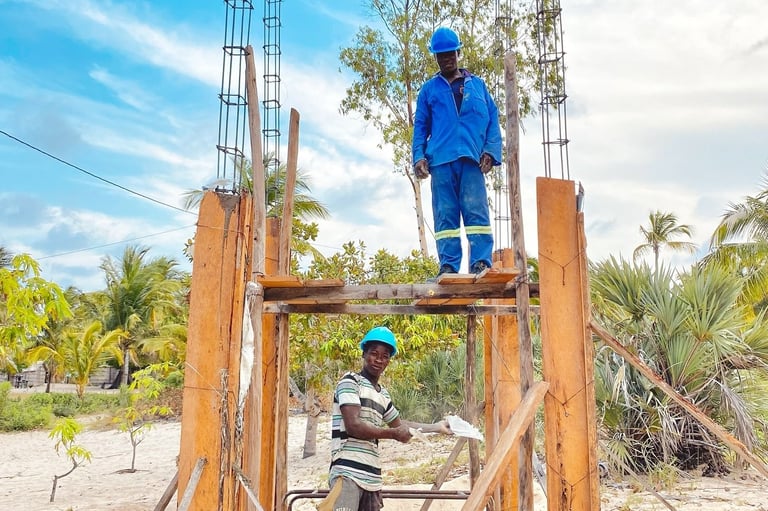

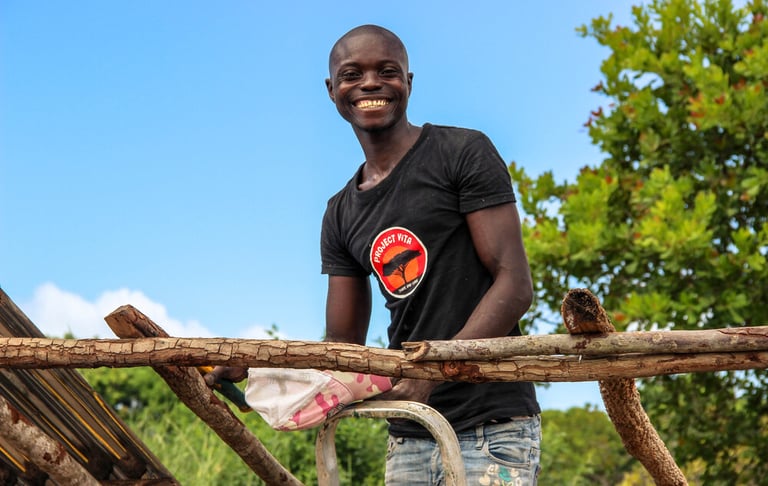

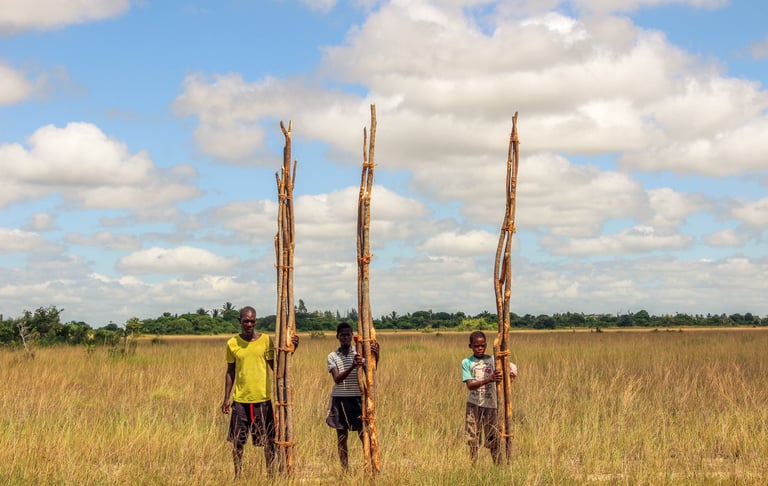

Challage
As UX researchers, our biggest challenge was that our "users" weren't using a product, but trusting an idea. We had to redefine our methods to understand and address a fundamental lack of faith in a good cause.
Process
The project followed a clear UX research process where we conducted research, collected and analyzed data, and synthesized findings to understand how Project Vita can better connect with and earn the trust of corporate partners.
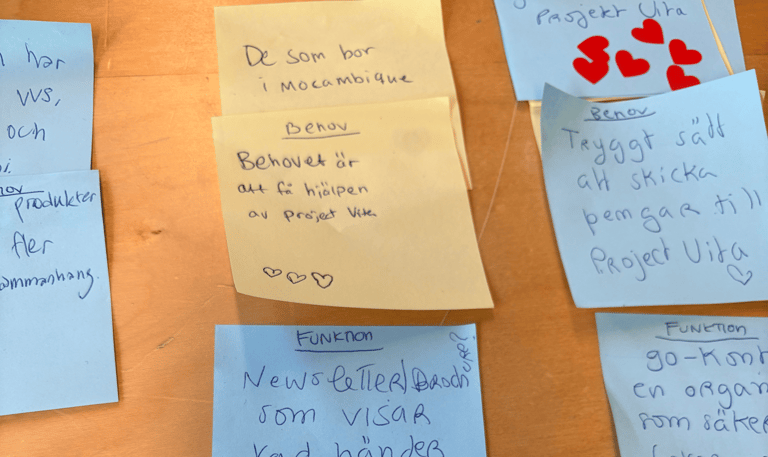

Identify and contact stakeholders
Our team mapped out relevant stakeholders, primarily decision-makers within companies, and I took the lead in establishing contact with them. My role involved scheduling and conducting qualitative interviews to gain deeper insights into their expectations and concerns.


Analyze data collectively
As a group, we analyzed the interview and survey data using Mural. This collaborative platform helped us visualize and map out recurring themes, leading to the creation of personas, empathy maps, and clear stakeholder profiles.
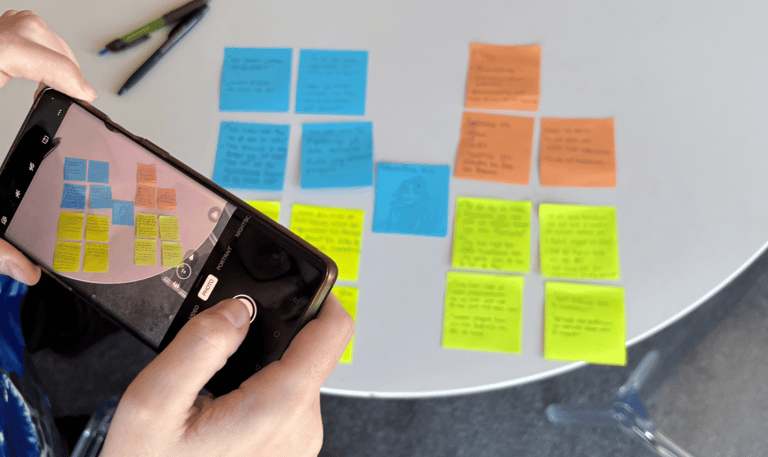

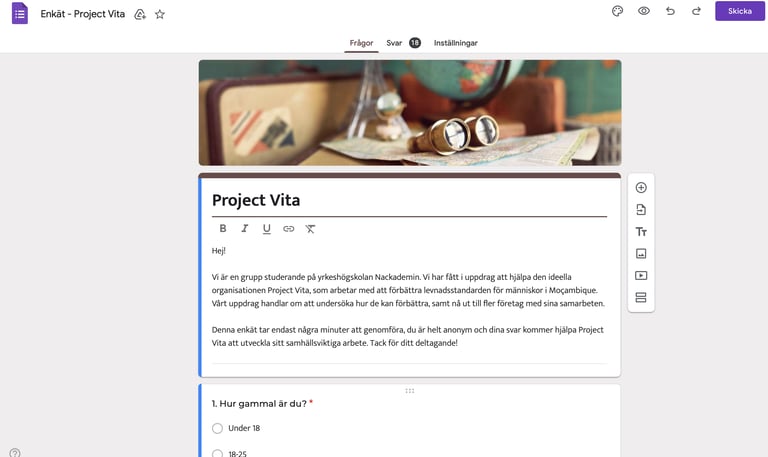

Define research questions
We began by formulating key research questions focused on understanding what kind of information companies seek on a nonprofit's website, how they prefer to engage in charitable work, and what builds trust when considering partnerships with smaller organizations like Project Vita.
Design and distribute a survey
To complement our interviews, we created a detailed survey consisting of both quantitative and qualitative questions. We distributed it to professionals across various industries, gathering broader data to support and contrast with the interview findings.
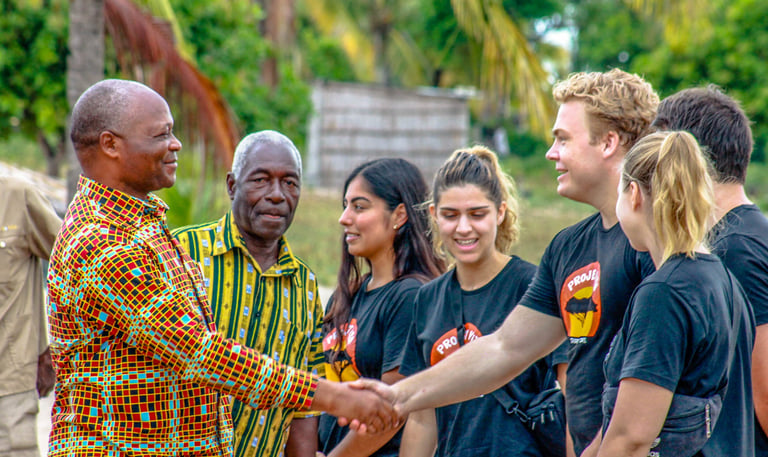

We then summarized our research insights and identified key patterns. These findings formed the foundation for concrete recommendations on how Project Vita can build trust, communicate its value more effectively, and make its website more appealing to potential corporate donors.
Come to conclusion
Recommendations
Showcase Credibility
Include references, documentation, and certification such as the 90-konto to build trust and assure companies of your legitimacy.
Focus on Long-Term Partnerships
Emphasize opportunities for resource sharing and long-term collaborations to align with how companies prefer to engage in charity work.
Enhance Website Information
Provide clear information about the organization, previous partnerships, and practical ways companies can support, making it easy for potential partners to get involved.
Project takeaways
Finding the right people
Finding the right people to interview was a real challenge, which made defining key stakeholders early on absolutely crucial for successful research.
Defining the research question
A clear research question and well-defined target audience are key to focused research and reliable results.
I learned to plan and conduct qualitative interviews and surveys, then transcribe and analyze the data to draw clear conclusions.
Interviews & surveys
Ultimately, a non-profit's success depends on its ability to build trust and transparency with stakeholders. By prioritizing clear communication and adapting its approach for each donor, a non-profit can turn one-time donations into lasting partnerships.
